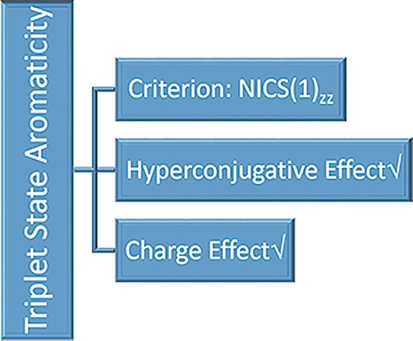Triplet State Aromaticity: NICS Criterion, Hyperconjugation, and Charge Effects
Submitted by Jun Zhu on Tue, 11/17/2015 - 16:06
Aromaticity, one of the most important concepts in organic chemistry, has attracted considerable interest from both experimentalists and theoreticians. It remains unclear which NICS index is best to evaluate the triplet-state aromaticity. Here, we carry out thorough density functional theory (DFT) calculations to examine this issue. Our results indicate that among the various computationally available NICS indices, NICS(1)zz is the best for the triplet state.

